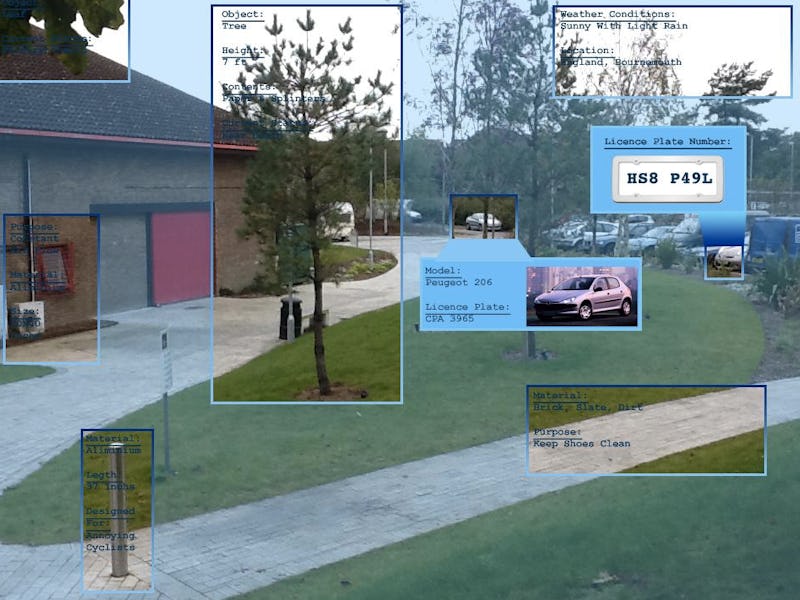Augmented Reality Stumbling Will Be the New Texting and Walking
The pedestrians of the future are monsters.

In 2015’s two most impressive tech demos, Magic Leap sent a whale through a gymnasium floor and Microsoft’s Hololens blasted robots to virtual bits on a stage. Though Google Glass is but a memory, augmented reality as a concept is still kicking. Should AR headsets take off, however, there’s a pedestrian problem with which it will need to come to terms. We suck at multitasking and, if we have screens near our faces, we’re going to walk into stuff.
Texas A&M University professor Conrad P. Earnest, an expert in the way human bodies move, demonstrated in a July 2015 PLOS study that using smartphones alters our very gaits. The inspiration for the study, he tells Inverse came after a particularly annoying trek stuck behind a large group of people texting. Earnest and his coauthors set up an obstacle course of sorts — a facsimile curb, mannequins to represent passersby — and had 18 people phone their way through it. He expects that more people would bang into the obstacles, but instead found that people texting walked more protectively. “They didn’t hit the barriers more,” he says, “they just slowed down and weaved side to side a bit more.”
Distracted walking raises the specter of what kinesiologists call “inattentional blindness”: “If you’re paying attention to your phone, you really don’t know what’s going on,” he says. “If you’re crossing the street, you may miss the fact that a car’s coming right at you.” We won’t just miss cars — we’ll ignore the patently absurd. “There’s a great study — they had people on the phone and walking to a park, and there was a guy on unicycle in a clown costume, and nobody saw him,” Earnest says, referring to a 2009 experiment in which only 8 percent of people talking on the phone recalled seeing the nearby jester. It’s easy to mock people who miss biking clowns — until you realize you’ve experienced inattentional blindness, too. It’s being hyper-focused on a video game while someone calls your name.
Is there a solution to walkers seduced by AR distractions? Would proposals for so-called technology lanes — slow paths for durdling pedestrians to thumb through texts and the internet, and, down the line, wear a Hololens — be a panacea for the speedwalker’s woes? Earnest doesn’t buy it. “Texting lanes are a joke — bike lines don’t work, why would texting lanes work? I don’t think people are going to be bothered to walk in a lane just so they can text simultaneously.”
The simplest solution, in his eyes, is just to step to the side of the sidewalk, handle stuff, then get back at it. That being said, there could be other ways to solve the problem he hasn’t encountered yet. “I currently have facilities available to continue the research, so if Google Glass wants to investigate this area I’m certainly happy to help,” he laughs.
He’s being serious.